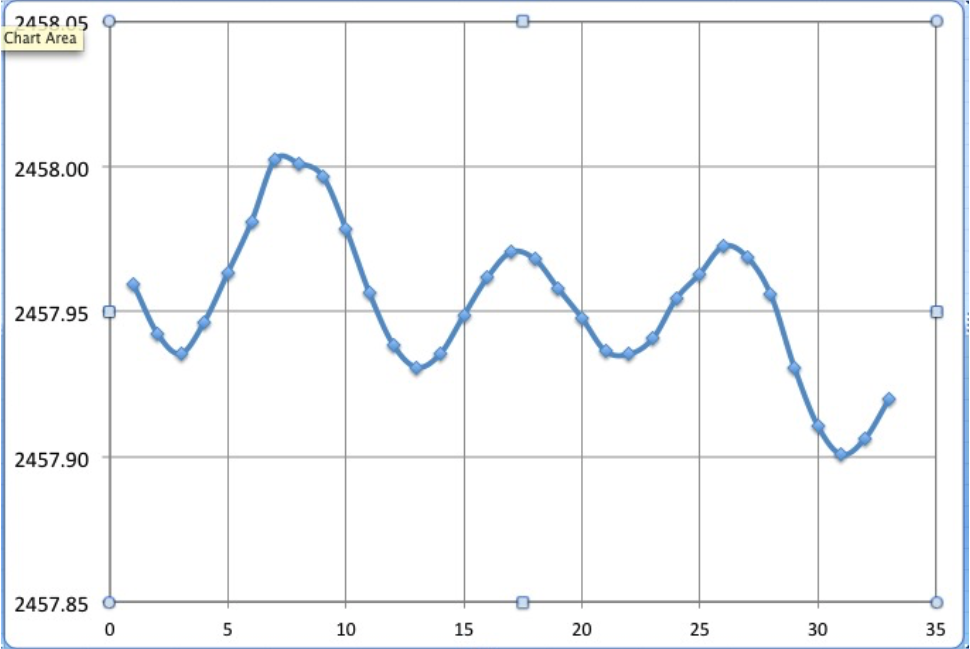
Seiches
In late 2011 I was experimenting with recording lake level information from the Deep Creek Hydro Electric Power Generation website. That meant finding ways to scrape the website on a regular basis and extract the lake level from the website and plot the results.
As I was experimenting with procedures, I noticed that the lake level was basically updated every 10 minutes. Hence I was trying to mimic the same.
The results plotted was rather noisy, but a pattern could be seen. Processing the data with various filtering techniques I came up with results such as shown in Figure 1. This is a short record in order to see clearly what was happening, but is very typical of all of the data.

Figure 1 - The lake is sloshing.
The raw data was obtained from the Deep Creek Hydro website at 10 minute intervals and processed with a with Savitzky-Golay filter. This filter reduces the noise in the data and attempts to produce the prevailing signal. Each point on the x-axis is 10 minutes.
One can clearly see the presence of a periodic signal with a period of about 90 to 110 minutes.
This appears to be a standing wave with a period of about 100 minutes and a peak to peak amplitude of about 0.05 ft, or about 0.5 inches.
With a little research it was found that this is a natural phenomenon, called a seiche, an oscillation of a water body in this case most likely induced and maintained by the frictional force of the wind on the water surface.
The definition of a seiche is taken from Reference 5: “A short-period oscillation in an enclosed or semien- closed body of water, analogous to the free oscilla- tion of water in a dish. The initial displacement of water from a level surface can arise from a variety of causes, and the restoring force is gravity, which al- ways tends to maintain a level surface. Once formed, the oscillations are characteristic only of the geome- try of the basin itself and may persist for many cycles before decaying under the influence of friction. The term “seiche” appears to have been first used to de- scribe the rhythmic oscillation of the water surface in Lake Geneva, which occasionally exposed large areas of the lake bed that are normally submerged.”
For a square basin of uniform depth an approximate equation for the short-period oscilation is given in Figure 2:

Figure 2 - Equation for the Period of a Seche
where: H = the water depth of the basin L = the length of the basin T = the oscilation period. n = the nodal line g = accelleration due to gravity
The average depth of the lake is about 27 ft. The length of the lake, along its main channel from where the Deep Creek stream enters the lake to the dam is estimated to be about 11 miles. We assume one nodal line, setting n=1.
Based on these assumptions the period of oscillation is calculated to be approximately 66 minutes.
Given the approximations made and the shape of the lake and its variable depth this is not a bad result for the measured 100 minute period. Furthermore, Reference 5 states that the above equation is only approximate.
Conclusio, a seiche period of 100 minutes is a good estimate.
Here are several references to this phenomenon:
1. Surface seiches in Flathead Lake
2. Seiches and Harbor Oscillations
3. Origin and prediction of seiches in Rotterdam harbour basins
4. HYDRODYNAMICS OF LARGE LAKES
5. Seiche
PLV
First Published: 1/22/2022